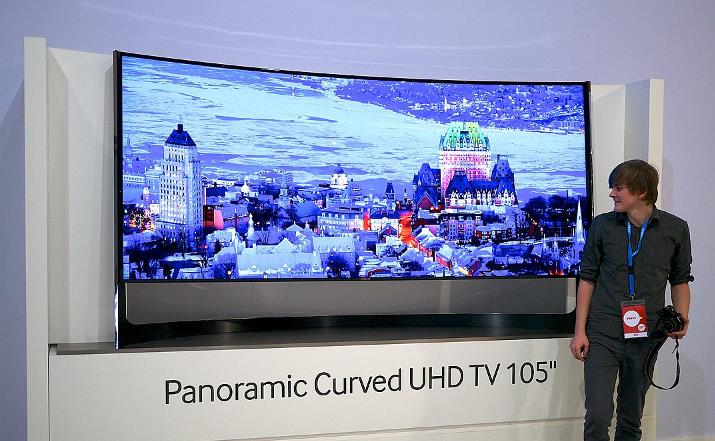As you dive into the home entertainment world, you may question the importance of HDMI 2.1 and whether it’s worth upgrading your cables. Fear not, as this article aims to shed some light on the differences between HDMI 2.0 and HDMI 2.1 and guide you in making informed decisions about your next home theater investment.
HDMI 2.1 promises a significant evolution from the previous HDMI standard, bringing about various improvements in the audio and video realm. One key enhancement is the support for 8K resolution, where HDMI 2.1 enables 8K content at 60fps, ensuring that you’re well-equipped for the future wave of high-resolution TVs. Moreover, HDMI 2.1 provides:
- Higher bandwidth and improved audio output.
- Making it ideal for gamers.
- Home theater enthusiasts.
- Content creators alike.
So, as you ponder the significance of HDMI 2.1 cables, it’s essential to consider your current and future entertainment needs. Knowing the capabilities and potential benefits of HDMI 2.1 will allow you to make informed decisions and optimize your home theater setup for the best experience possible.
Table of Contents
Understanding HDMI 2.1
From HDMI 2.0 to HDMI 2.1
As you explore the world of HDMI cables, you may notice a shift from HDMI 2.0 to HDMI 2.1. This new specification significantly improves HDMI’s performance, allowing for higher bandwidth (up to 48 Gbps) and more advanced features, such as 8K resolution at 60Hz, 4K at 120Hz, and improved audio.
HDMI 2.1 also supports:
- Dynamic HDR, which optimizes color, contrast, and brightness on a scene-by-scene basis
- Enhanced Audio Return Channel (eARC), providing high-quality, uncompressed digital audio
- Quick Frame Transport (QFT), reducing latency in gaming and virtual reality experiences
Auto Low Latency Mode (ALLM) automatically adjusts settings for smoother gameplay.
Backward Compatibility
Upgrading to HDMI 2.1 doesn’t mean you need to replace all your devices and cables. HDMI 2.1 is designed to maintain backward compatibility with older versions, such as HDMI 2.0 or 1.4. This means that your HDMI 2.1 cable will still work with your older devices, although you might experience only some of the enhanced features of HDMI 2.1.
Remember, using the appropriate HDMI 2.1 cable is essential to enjoy the benefits of this new specification fully. Certified Ultra High-Speed HDMI cables are designed to handle HDMI 2.1’s higher bandwidth requirements and deliver the best possible performance.
In summary, HDMI 2.1 significantly improves over HDMI 2.0, providing better resolution, faster frame rates, and enhanced audio features. Additionally, its backward compatibility ensures that your existing gear remains functional, so you can enjoy the benefits of HDMI 2.1 while gradually upgrading your setup.
Video Attributes and Advancements
Resolution Capabilities
With HDMI 2.1, you’ll be amazed at the increased resolution capabilities compared to earlier standards. Say goodbye to just 4K and welcome 8K, 10K, and even higher resolutions! This means much more detailed and lifelike content for your eyes to feast upon. Both 8K and 10K resolutions significantly improve, with 8K delivering four times the pixel count as 4K and 10K giving you six times as many pixels as standard 4K video.
Increased Bandwidth
One of the critical advancements with HDMI 2.1 is the increased bandwidth, which is essential to handle those higher-resolution video content. This significant improvement allows for a fantastic 120fps (frames per second) refresh rate, even at 10K resolution. The enhanced bandwidth means you’ll enjoy smoother motion, more responsive gaming experiences, and more affluent, more immersive HDR (High Dynamic Range) content.
Speaking of HDR, HDMI 2.1 introduces Dynamic HDR. Unlike standard HDR, which applies a consistent color and contrast enhancement across an entire video, Dynamic HDR adjusts these enhancements scene-by-scene or frame-by-frame. This results in a more stunning and satisfying visual experience for you.
To sum up, HDMI 2.1 brings incredible advancements in resolution capabilities and increased bandwidth, making it an essential upgrade for enjoying the most lifelike video content and smooth, vibrant gaming experiences. So, get ready to embrace all the fantastic opportunities that HDMI 2.1 has to offer!
Audio Performance
ARC vs. eARC
Regarding audio performance, HDMI 2.1 brings some improvements, particularly in the form of an Enhanced Audio Return Channel (eARC). While HDMI 2.0 supports the standard Audio Return Channel (ARC), HDMI 2.1 takes it a step further with eARC. The main difference between ARC and eARC is the bandwidth available for audio transmission. With eARC, you can enjoy an audio bandwidth of 37 Mbits per second, compared to under 1 Mbit per second with regular ARC. This additional bandwidth allows for better audio quality and more advanced audio formats.
Improved Sound Formats
Thanks to the increased bandwidth provided by eARC in HDMI 2.1, you can now experience the following improved sound formats in your home theater setup:
- Uncompressed audio formats: eARC supports uncompressed 5.1 and 7.1 surround sound, providing a more immersive and richer listening experience.
- Dolby Atmos: This advanced audio technology allows for object-based audio, meaning sounds are mapped to virtual locations in 3D space, providing a more realistic audio experience. The increased bandwidth of eARC enables true 7.1.4 Dolby Atmos, offering an impressive upgrade from Dolby Digital over PCM supported by HDMI 2.0.
- DTS: Much like Dolby Atmos, DTS is an object-based format that delivers immersive, lifelike audio. The support for eARC in HDMI 2.1 allows you to take full advantage of DTS audio in your home theater setup.
So, if you want to upgrade your audio experience, HDMI 2.1 with eARC makes a noticeable difference. With the support for advanced audio formats like Dolby Atmos and DTS and uncompressed 5.1 and 7.1 surround sound, you can enhance your home theater setup and enjoy a more immersive listening experience.
TV and Display Technologies

4K, 8K, and 10K Displays
As you delve into display technologies, you’ll come across various resolutions like 4K, 8K, and even 10K. A 4K TV has a resolution of approximately 3840×2160 pixels, providing excellent picture quality and a high level of detail. An 8K TV takes it further, boasting a resolution of around 7680×4320 pixels, resulting in even greater clarity and more immersive visuals. 10K displays are at the cutting edge with an incredible resolution of 10240×4320 pixels, pushing the boundaries of image quality and realism.
High-Speed HDMI Connections: HDMI 2.1 plays a significant role in using these high resolutions as it supports resolutions up to 10K. Moreover, it supports up to 48 Gbps bandwidth, enabling high-speed data transmission for smooth video playback and enhanced audio.
TV Brands Supporting HDMI 2.1
Multiple TV brands, including LG, Samsung, and others, are embracing HDMI 2.1 technology as it provides various benefits to their consumers. Let’s take a look at a few examples:
- LG: By integrating HDMI 2.1, LG’s OLED and other high-end TV models can fully use advanced features, such as 4K UHD resolution, high dynamic range (HDR), and increased contrast ranges. Furthermore, HDMI 2.1 enhances the overall brightness, picture quality, and color depth that LG’s displays can deliver.
- Samsung: Samsung’s adoption of HDMI 2.1 allows their 4K and 8K TVs to capitalize on higher resolutions, providing a more immersive and enjoyable viewing experience. With HDMI 2.1 connectivity, Samsung TVs can support features like variable refresh rates (VRR) and auto low latency mode (ALLM) to improve gaming performance on their displays.
By incorporating HDMI 2.1, these brands help you get the most out of your high-resolution TVs. Consider investing in an Ultra High-Speed Certified HDMI cable to maximize the potential of your display and benefit from the advantages that HDMI 2.1 technology offers.
Future Potential and Reservations
HDMI 2.1 offers a massive improvement over its predecessor, HDMI 2.0. With increased bandwidth capacity, HDMI 2.1 supports 4K resolutions at 120fps and even 8K content at 60fps. This means that as a user of devices with HDMI 2.1, you’ll enjoy smoother gameplay, sharper movies, and more immersive experiences.
For gamers, the introduction of PS5 and other next-gen consoles has created a demand for higher resolutions and frame rates. HDMI 2.1 caters to this need, benefiting you from features like Quick Frame Transport (QFT) and Quick Media Switching (QMS). These innovations help reduce latency and enable a seamless gaming experience.
There are already HDMI 2.1 compatible monitors on the market, such as those from ASUS, ready to deliver cutting-edge visuals. As 8K content and 4K UHD resolution become increasingly mainstream, higher transmission rates will be needed, and HDMI 2.1 will be essential.
However, it’s also essential to approach the prospect of 10K resolution and 10K content with some reservations. While HDMI 2.1 technically supports 10K content, it’s important to remember that this level of resolution is still quite far from becoming mainstream. The availability of 10K TVs, monitors, and even film or gaming content is limited, so for now, your primary focus should be on 4K and 8K capabilities.
Remember that not all HDMI 2.1 capable devices may fully utilize this standard’s high-end features. As a user, you need to verify the specifications of your devices to ensure they meet your expectations. Research and compare different products to find the best ones that suit your needs.
So, while HDMI 2.1 holds tremendous potential for the future, it’s crucial to remain informed about the capabilities of your devices and have realistic expectations. Embrace this technology’s impressive advancements but proceed with a practical approach, ensuring you make informed choices when investing in future-ready tech.

